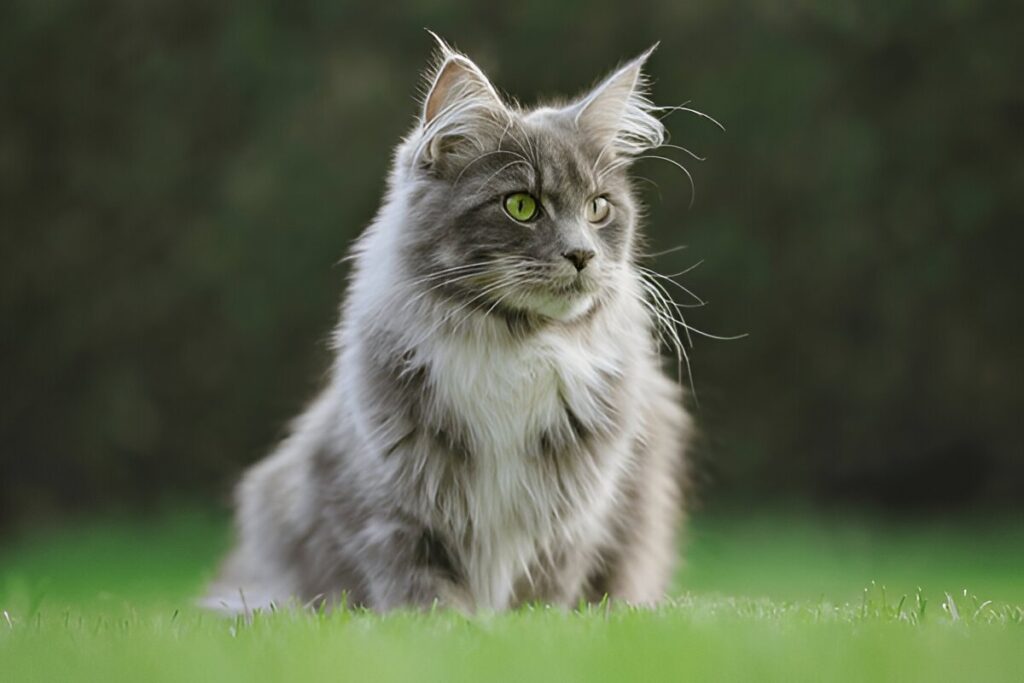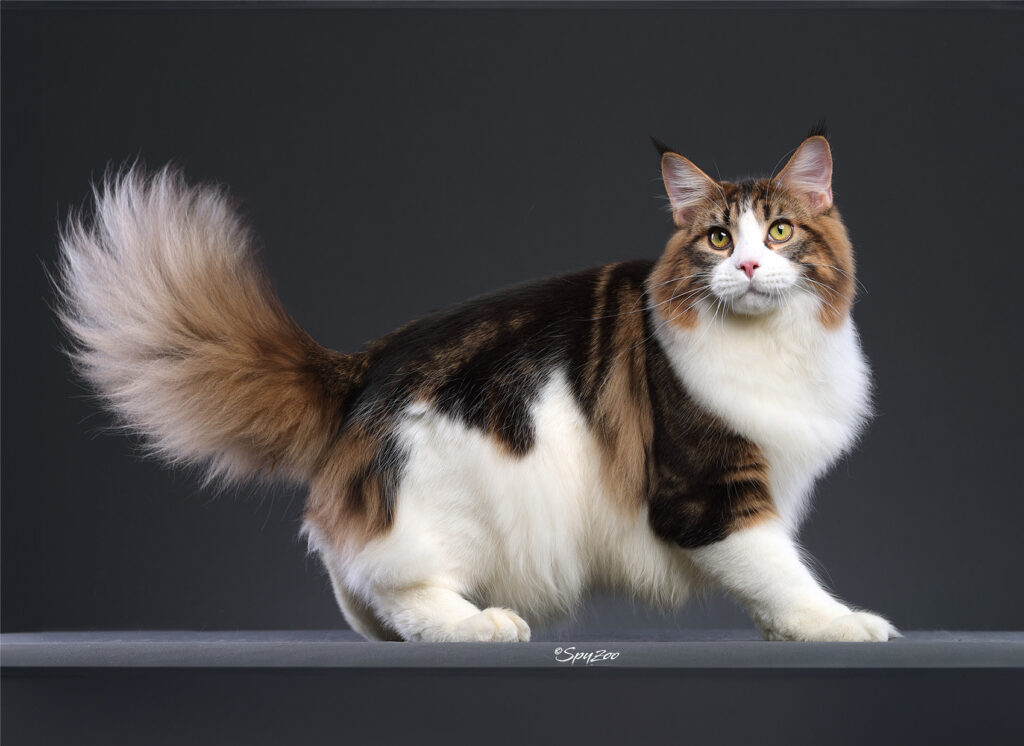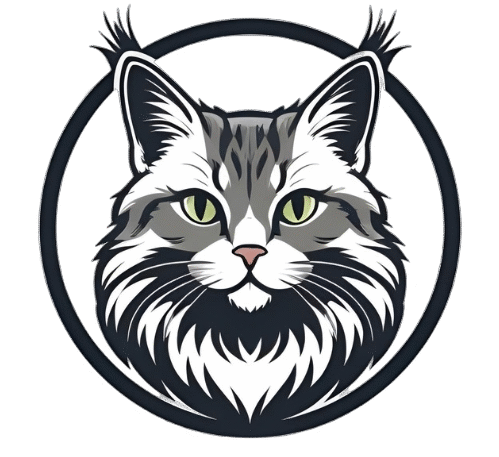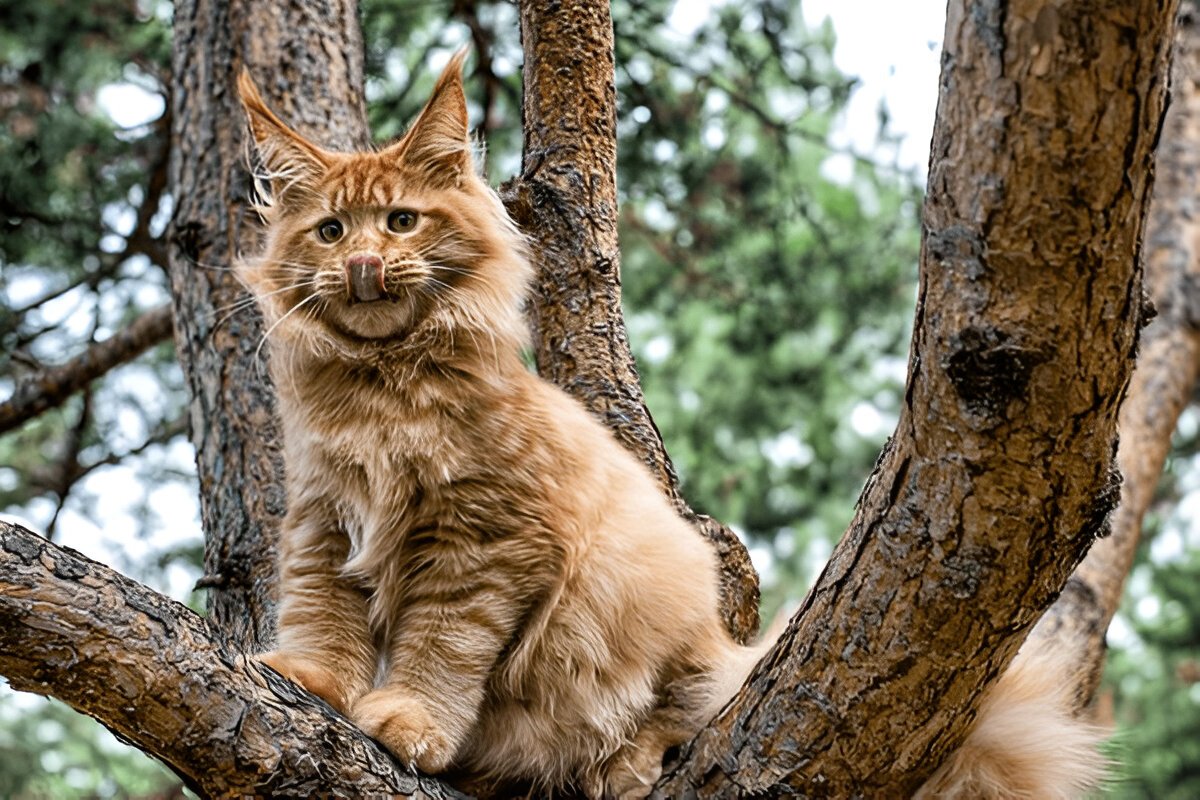When talking about cat breeds, the Maine Coon size is arguably the most impressive and discussed factor. Conveniently called “the gentle giant” of cats, Maine Coons are known for their big, strong bodies and long fluffy tails.
Their size makes them different from almost all other domestic cats, which makes them the perfect cat for cat lovers seeking a large, friendly companion.
But how big do they get?
What makes them different from your average housecat?
And how long does it take for them to reach their full size?
Let me tell you what it’s really like raising Maine Coons—size, growth, and the differences I see every day between males and females.
The Maine Coon Size: What I Observed
My First Experiences
I will never forget the first time I picked up a Maine Coon kitten. Even at eight weeks, his paws looked too big for his body, and his tail was fluffier than most adult cats I’ve seen.
As maine coon kittens grew, their size became the biggest conversation with everyone who visits me. Friends come over and ask, “Is that really a cat?”
The Numbers—and the Truth
In my experience, the average Maine Coon size specifically male hits around 18 to 22 lbs fully grown, with a few of my largest boys pushing 24 lbs. They are long, muscular cats, and their tails are like feather dusters—often stretching 16 inches or longer. Females are daintier, average 12 to 15 lbs, but carry themselves with the same dignity[1].
I’ve had several “runts” who stayed under 12 lbs, and one special male, Big Ben, hit 23 lbs in three years. He’s the one who makes my king-sized bed small.

Male vs. Female Maine Coon Size Chart
Here’s a chart based on my research and daily experience:
| Feature | Male Maine Coon | Female Maine Coon |
| Weight (lbs) | 18 – 22 (up to 24+) | 12 – 15 |
| Height at Shoulder (in) | 12 – 16 | 10 – 14 |
| Body Length (in) | 20 – 30 | 18 – 28 |
| Tail Length (in) | 14 – 18 | 12 – 16 |
Males are almost always heavier and taller, but I’ve had some females with longer tails or more dramatic ruffs. The boys tend to be more laid-back and goofy, while the girls are clever and a little bossy—at least in my house.
Maine Coon Size and Growth Stages
There is an element of patience involved in raising Maine Coons.
Here is what I have seen, year after year:
1. Kitten Stage (0–4 weeks)
Tiny, full of vocal range, and a thirst for food outweighing two food bowls at once.
Even at birth, their paws and ears are particularly large and heavy.
2. Weaning Stage (4–8 weeks)
They start to engage the surroundings, and I believe you can almost see them grow overnight.
I maintain a notebook to keep track of their weekly weights, and my male kittens seem to consistently weigh more than my females by week six.
3. Juvenile Stage (2–6 months)
This is the “awkward teenager” period of life. Long legs, round bellies, and tails that start looking like bottle brush!
My male kittens normally weigh 6–8 pounds by 6 months; females are normally in-between 5–7 pounds.
4. Young Adult Stage (6–12 months)
Growth rates will decrease slightly at this stage, but the muscle development begins.
My males typically exceed 12 pounds by their first birthday, while my females consistently hover around 9–10 pounds.
5. Adolescent Adult Stage (1–3 years)
This is where Maine Coons differ in comparison to other breeds, they just continue to grow.
By 2 years old, my largest males are weighing in at 18+ pounds, and although they may appear to be in their developed adult weight, they still look “young.”
6. Mature Adult Stage (3–5 years)
This is the age when they “grow up” and you start to see the changes. The chest broadens, the ruff fills out, and they are finally starting to look like those magnificent cats in breed books.

Maine Coon Growth Chart
| Age | Male Avg Weight (lbs) | Female Avg Weight (lbs) |
| 4 months | 6.0 | 5.5 |
| 6 months | 9.5 | 7.5 |
| 1 year | 14.0 | 10.5 |
| 2 years | 18.5 | 13.0 |
| 3 years | 20.5 | 14.0 |
| 5 years | 22.0+ | 15.0 |
Note: Each cat is unique, but these numbers give new owners a realistic idea of what to expect.
Size Comparison Chart: Maine Coon vs. Other Popular Domestic Cat Breeds
As a Maine Coon owner and breeder, I often hear, “How big are Maine Coons to other cats?”
I can confidently say they do stand out in the kitty world for their size. However, it is interesting to compare their size to some other common domestic breeds.
What follows below is an overview of the size comparison based on my experience and research, which will help show how impressive these gentle giants really are.
| Breed | Male Weight (lbs) | Female Weight (lbs) | Length (inches, nose to tail) | Height at Shoulder (inches) | Coat Type |
| Maine Coon | 18 – 22 (up to 25) | 12 – 15 | Up to 40 | 10 – 16 | Long, thick, water-resistant |
| Ragdoll | 15 – 20 | 10 – 15 | 17 – 21 | 9 – 11 | Semi-long, silky |
| Norwegian Forest Cat | 13 – 22 | 9 – 18 | 12 – 18 | 9 – 12 | Long, dense |
| Savannah | 12 – 25 | 8 – 15 | 14 – 17 | 10 – 17 | Short to medium |
| Domestic Shorthair | 8 – 12 | 6 – 10 | 15 – 20 | 9 – 10 | Short |
| Siamese | 8 – 12 | 6 – 10 | 15 – 20 | 8 – 10 | Short |
What This Means in Real Life
My experience with Maine Coons is that they are quite large compared to many other breeds. An average Domestic Shorthair or Siamese cat weighs about half of an average Maine Coon male and is considerably shorter.
A Maine Coon can stretch out to nearly double the length of an average housecat.
Maine Coons are comparable to other large breeds such as Ragdoll or Norwegian Forest Cat, but are found to be bulkier. Maine Coons also can be similarly heavy but have more muscular builds and thicker fur.
The Savannah cat can be similarly heavy as or heavier than Maine Coons, particularly in early generations, but have a sleeker, more athletic build.
Myths and Realities
- Not every Maine Coon is a giant. I had smaller ones, especially among the females ones.
- Size does not always mean health. I monitor weight closely because being too heavy can mean joint and heart issues.
- Personality is just as much a factor as size. Some of my smallest cats are the most courageous and nicest.
Final Words
Maine Coons size and growth stages are something special to observe! They are large, beautiful cats with gentle natures! Maine Coons grow slowly, so you get to enjoy them growing for years!
Whether you have a big boy or a little girl, your main goal is to keep them healthy and happy. Watch their growth, feed them, and get ready for a lifetime of memories with one of the greatest cats in the world!
References:
- https://en.wikipedia.org/wiki/Maine_Coon
- https://untamed.com/blogs/cat-breeds/maine-coon-growth-chart
- https://www.catster.com/cat-health-care/maine-coon-size/

